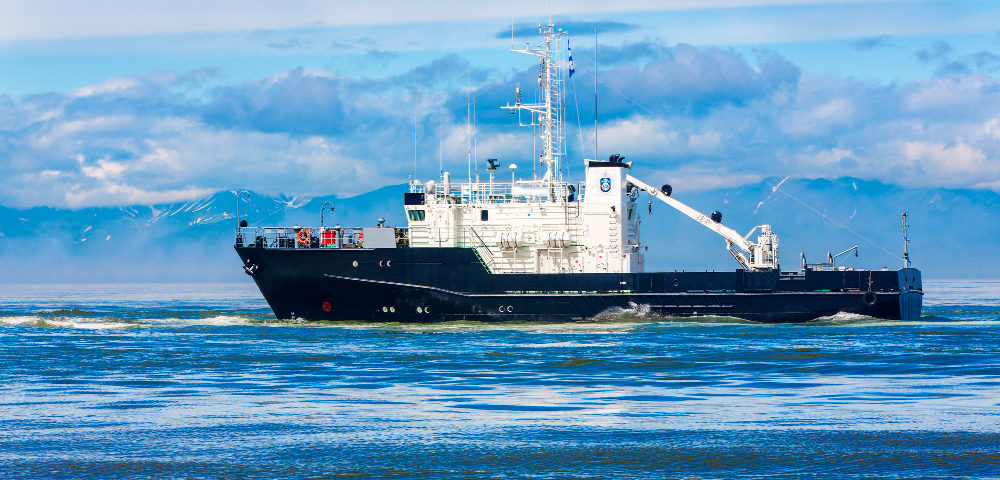How can one erase from memory the infamous Mumbai blasts of 1993!!
Who can assuage the nations pain at the horrors inflicted on 26/11 and most importantly how did the terrorists get such a comfortable access?
These are incidents which jolt one’s conscience. They compel the nation as a whole to wake up and exhort the government to put in place a fail proof security mechanism on the borders.
In fact, the entire nation shook up when a bunch of terrorists,with utmost ease, landed in a small fishing settlement in Mumbai spreading unprecedented havoc. This attack brought out the inherent weakness in India’s coastal security preparedness. It shook the security establishment out of its slumber compelling the incumbent government to completely reorganise the national coastal security architecture.
While the land borders have the provisions of fencing and constant monitoring by both the Indian Army and BSF, it’s the coastal boundaries which are yeta huge concern.
Another glaring example which surprised many was the running aground of MV Pavit in July 2011 at Juhu Versova beach off Mumbai. MV Pavit had been abandoned by the crew on 29th June 2011 off OMAN! They were evacuated by the Royal Navy and transferred on to Jag Pushpa for onward transportation to Gujarat for disembarkation. The Maritime Rescue Coordination Centre (MRCC) Mumbai which was in the knowhow of the incident later revealed that, on enquiring, the owners had informed that vessel had in fact sunk. An analysis carried out later by Indian Navy revealed that probable reasons for non-detection of MT Pavit could be due to vessels drift path, low and thick monsoon clouds preventing any Radar detection. Additionally, heavy rains precluded visual detection of the vessel. Moreover, as the vessel had been abandoned its AIS (Automatic Identification Systems) was notoperational adding on to the difficulties in discovering the vessels presence in time. Running aground and inability to detect the vessel well in time brought out the glaring weaknesses in the nation’s coastal surveillance capabilities.
With its nearly 7516 kms of coastal boundary interspersed with 12 major ports and nearly 200 minor ports,India has historically been a Maritime Nationalong with two large island territories, the Andaman &Nicobar Islands and the Lakshadweep. Theseterritories,owing to their strategic location areconstantly susceptible to dangerous and unwelcome intrusions. While being a vital asset in our national securonomic construct they are also extremely vulnerable. The A&N islands are nearly 700 nm from the Indian mainland andjust 90 kms from the western tip of Indonesia while their northern most tip is less than 20 miles from Myanmar’s Coco Islands. Moreover, they are on the normal route of every ship travelling to & from Europe/Red sea to Singapore/Japan/China making them even more exposed to dangers through their exposed coastline.
Worryingly, there has also been a surge in illicit activity in the littorals. Illegal drug trafficking incidents have recently witnessed arise. One of the most talked about and prominent incident being the seizure of the M.V. Henry in August 2017.As an aftermath the government made a knee jerk reaction by expanding the security boundaries of coastal police to 200 nautical milesresulting in overlapping with areas of responsibility of the coast guard.
Further strengthening this fear of illicit drug trade along India’s porous borders was the recent[i] seizure of a huge consignment of methamphetamine drifting at sea in a drum along the shores near Mamallapuram in Kancheepuram district.
Owing to proximity with neighbouring countries and also the Gulf there has been an increase in the number of instances of smuggling of goods, gold, narcotics, explosives, arms andammunition as well as the infiltration of terrorists into the country from these coasts.
SOME STRATEGIC LOCATIONS ALONG THE COAST WHICH DEMAND CONSTANT SURVEILLANCE ARE:
- Various EEZ’s both on the Eastern as well as Western coast.
- Oil refineries and storage tanks by major oil companies, especially along the Saurashtra coast in Vadinar, Salaya, Sikka and Jamnagar as well as LNG terminals in Hazira and Dahej.
- LNG terminals in various ports on the West coast atDabhol, Kochi, Mundra, Ennore, Mangalore and Mundra.
- Mumbai High offshore basin along with Heera,Panna and Muktha oil fields. This being the oil basin of the country has little or no protection at all. Fishing boats move freely even inside the oil fields. The oil field exploration companies have employed small patrol boats to monitor security but apparently no one bothers to pay any heed to them. There have been incidents when the fishing boats have come as close as 50 metres from oil installations posing huge security risks.
- Major imports of county’s oil are through SPM and SBM which are a few miles into the sea. They have practically non-existent security.
- Oil & Gas reserves in Cauvery and Krishna-Godavari basin.
- Naval bases, nuclear power plants, satellite and missile launching ranges, and ports.
- Several nuclear power plants, such as at Tarapur, Kudankulam, Kalpakkam and the proposed plant at Jaitapur have been established close to the sea.
- Satellite launching and missile testing facilities such as the Satish Dhawan Space Centre and the Abdul Kalam Islands missile facility are also located along the coast.
- Various shipyards.
- 12 major ports and close to 200 minor ports.
FACTORS THAT ADD TO VULNERABILITIES OF INDIAN COASTLINE
- Sea borne terrorism: hijacking, attacking, and sinking ships.
- Commercial centres along the coast: the 26/11 terror strike in Mumbai in 2008 highlighted this with Mumbai’s two iconic hotels Taj and Oberoi coming under attack along with the Jewish Centre.
- Attacks on Ports and other strategic facilities: ports which handle huge volumes of cargo including both break bulk / bulk and oil. More so as they are right adjacent to huge human settlements any breach in security exposes the public at large as was the case in 26/11 attacks.
- Attacks on Ships: ships are soft targets for the terrorism.
- Piracy and armed robbery:pose a major threat to sea navigation.
- Smuggling and trafficking: Indian coasts have been susceptible to smuggling ofitems such as gold, electronic goods, narcotics, and arms.
- Infiltration, illegal migration and refugee influx: Large refugee influxes since past many years have resulted in disturbing the political stability in the effected states.
SOME INITIATIVES ALREADY TAKEN BY THE GOVERNMENT TO STRENGTHEN COASTAL SECURITY
A multi-tier arrangement of Indian Navy, Coast Guard and the Marine Police has been created for monitoring & protection of the coast.While the Indian Navy carries out surveillance up to the Indian EEZ, the Coast Guard has been designated to monitor the territorial waters and the Marine police has been given the responsibility for Internal waters.
In a three-tierarrangement the overall responsibility for coastal security has been vested with the Indian Navy with the Director General Indian Coast Guard being the overall coastal commander. The state Marine Police is the third tier in this arrangement.
In addition to the above arrangement, agencies like customs and port trusts too have their own patrol boats. This full setup is controlled by an apex body called National Committee for Strengthening Maritime and Coastal Security (NCSMCS) headed by the Cabinet Secretary. Collection of data and coordination is carried out through Joint Operating Centres at Vishakapatnam, Mumbai, Kochi and Port Blair.
To further enhance the security anElectronic Surveillance system has been launchedknown as National Command Control Communication and IntelligenceNetwork (NC3I). This provides a near complete and gapless surveillance in orderto prevent the intrusion of undetected vessels.
It comprises of:
- Coastal radar chain stations.
- Automatic identification system (AIS) stations.
- Vessel traffic management and information system (VTMS).
IMPROVEMENTS REQUIRED
- To clearly demarcate the authority of each agency in order to ensure avoidance of any overlapping of their authorities.
- Educate the coastal fishing villages to act as eyes and ears of the nation.
- To ensure that each and every boat is registered with DG Shipping and mandatorily carries an (Automatic Identification System) AIS.
- To inform all in the fishing industry that absence of above will be treated as an offence and will carry severepunishment. This will ensure that any boat detected without AIS or registration can be boarded by the coast guard well before it approaches Indian coast.
- Every boat which is either at sea or Internal waters must have a multi-channel VHF radio.
- To train the crew of every boat that no communication is legally permitted on VHF Ch 16 which is only for emergency purposes.
- Each boat must display the necessary signals as per (Rules of the Road) ROR.
- With utmost urgency fulfil the shortage of manpower of coastal police.
- To establish dedicated training academy for the ICG.
- Demarcating of dedicated jetties for Coast Guard and Marine Police.
- Ensuring that each coastal state understands its responsibility towards monitoring mechanisms.
LEGISLATIVE INITIATIVES REQUIRED
- Clear the coastal security bill through the parliament.
- Strict compliance of ISPS by each port. There are certain ports which still have porous or completely non-existent boundaries permitting free access.
- Proper, Precise guidelines to all government departments, ports, state machineries, and all stakeholders about their minimum role to maintain standard of security.
- Each player in the coastal security to regularly report to NCSMCS about means adopted towards coastal security and any lapses which need to be attended.
- An annual conference to be organised of all stakeholders to ensure smooth operations in times of emergency.
- Conduct regular coastal security exercise to ensure smooth coordination on the lines of Sagar Kavach and Sea vigil.
- Encourage coastal states coordination through strict legislation.
- Establish a National Maritime Coastal Authority as there is a general belief that NCSMCS is at best an Ad-hoc type of arrangement.
- Stronger involvement with enhanced authority for coastal police.
- Standard operating Procedures for all coastal states / UT’s to be formalised and put in place.
In conclusion,the foregoing, clearly establishes that though the Governments have from time to time taken initiatives for securing the coasts, they should not rest on their oars as unscrupulous elements would throw newer and far more deadlier challenges.Hence it should be a constant endeavour to enhance skills, incident readiness, innovative methods along with committed & motivated work force.
Capt.Pankaj Kapoor
Master Mariner, Bachelor of Science, Bachelor of Law (LLB), Master of Law, Post Grad Maritime law,AFNI
[1] June 20,2020 where 78 kgs of drugs were found floating off the coast
Contributions by:
Cmde. Arvind Singh, MVC, NM (Retd.)
Cmde. Sujeet Samaddar, NM (Retd.)
Cmde. A. J. Singh (Retd.)



